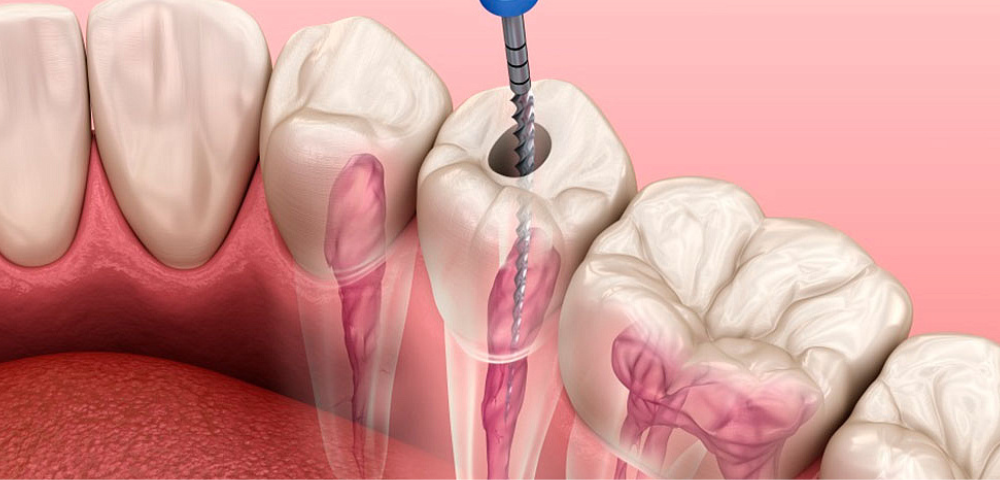
Root canal treatment is a dental procedure designed to save a tooth that has become severely infected or decayed. By removing the infected pulp, cleaning the canal, and sealing it, this procedure can relieve pain and prevent the need for tooth extraction. This guide will help you understand what root canal treatment involves, why it may be necessary, and what you can expect before, during, and after the procedure.
What Is Root Canal Treatment?
Root canal treatment, often simply called a “root canal,” is a procedure used to treat infection or inflammation of the dental pulp – the soft tissue inside the tooth that contains nerves, blood vessels, and connective tissue. When the pulp becomes infected due to deep decay, cracks, or trauma, it can cause severe pain, sensitivity, and swelling. A root canal treatment involves:
- Removal of the Infected Pulp: The dentist or endodontist removes the damaged tissue from within the tooth.
- Cleaning and Shaping the Canal: The empty canals are carefully cleaned and shaped to remove bacteria and prepare them for filling.
- Sealing the Tooth: Once cleaned, the canals are filled with a biocompatible material, and the tooth is restored with a crown or filling to protect it from future damage.
Why Is It Needed?
A root canal is typically recommended when:
- Infection or Abscess: The pulp is infected or abscessed.
- Severe Decay: Decay has progressed deep into the tooth.
- Cracked or Fractured Tooth: Trauma or cracks expose the pulp to bacteria.
- Persistent Pain: Ongoing toothache or sensitivity that does not subside with standard dental treatments.
The Root Canal Procedure
The procedure generally follows these steps:
- Diagnosis: X-rays and examinations determine the extent of the infection.
- Anesthesia: Local anesthesia is administered to numb the affected tooth and surrounding area.
- Access Opening: A small opening is made in the crown of the tooth to reach the pulp.
- Pulp Removal: The infected or damaged pulp is carefully removed.
- Cleaning & Shaping: The empty canals are cleaned, disinfected, and shaped.
- Filling the Canal: The canals are filled with a rubber-like material called gutta-percha.
- Restoration: A crown or filling is placed to protect the treated tooth and restore its function.
Benefits of Root Canal Treatment
- Pain Relief: Eliminates pain caused by infection or inflammation.
- Tooth Preservation: Saves the natural tooth, preventing the need for extraction.
- Functionality: Restores proper chewing and biting function.
- Aesthetics: Helps maintain your smile and the natural appearance of your teeth.
Aftercare and Recovery
After the procedure, you might experience some mild discomfort or sensitivity, which is typically managed with over-the-counter pain relievers. Here are some aftercare tips:
- Rest and Recovery: Avoid hard or chewy foods for a few days.
- Good Oral Hygiene: Brush and floss regularly to keep the area clean.
- Follow-Up Visits: Attend scheduled dental appointments to ensure proper healing.
Frequently Asked Questions (FAQ)
A root canal treatment is a dental procedure that removes infected or damaged pulp from inside a tooth, cleans the canals, and seals them to prevent further infection.
A root canal is recommended when the pulp becomes infected or inflamed due to deep decay, cracks, or trauma. This treatment helps relieve pain and saves your natural tooth from extraction.
Most patients experience minimal discomfort during and after the procedure. Local anesthesia is used to numb the area, and modern techniques help minimize pain.
The treatment typically takes one to two appointments, with each session lasting about 60 to 90 minutes. The exact duration depends on the tooth’s condition and complexity.
Post-treatment, you may feel some mild discomfort or sensitivity for a few days. Following your dentist’s aftercare instructions—like avoiding hard foods—helps ensure a smooth recovery.
